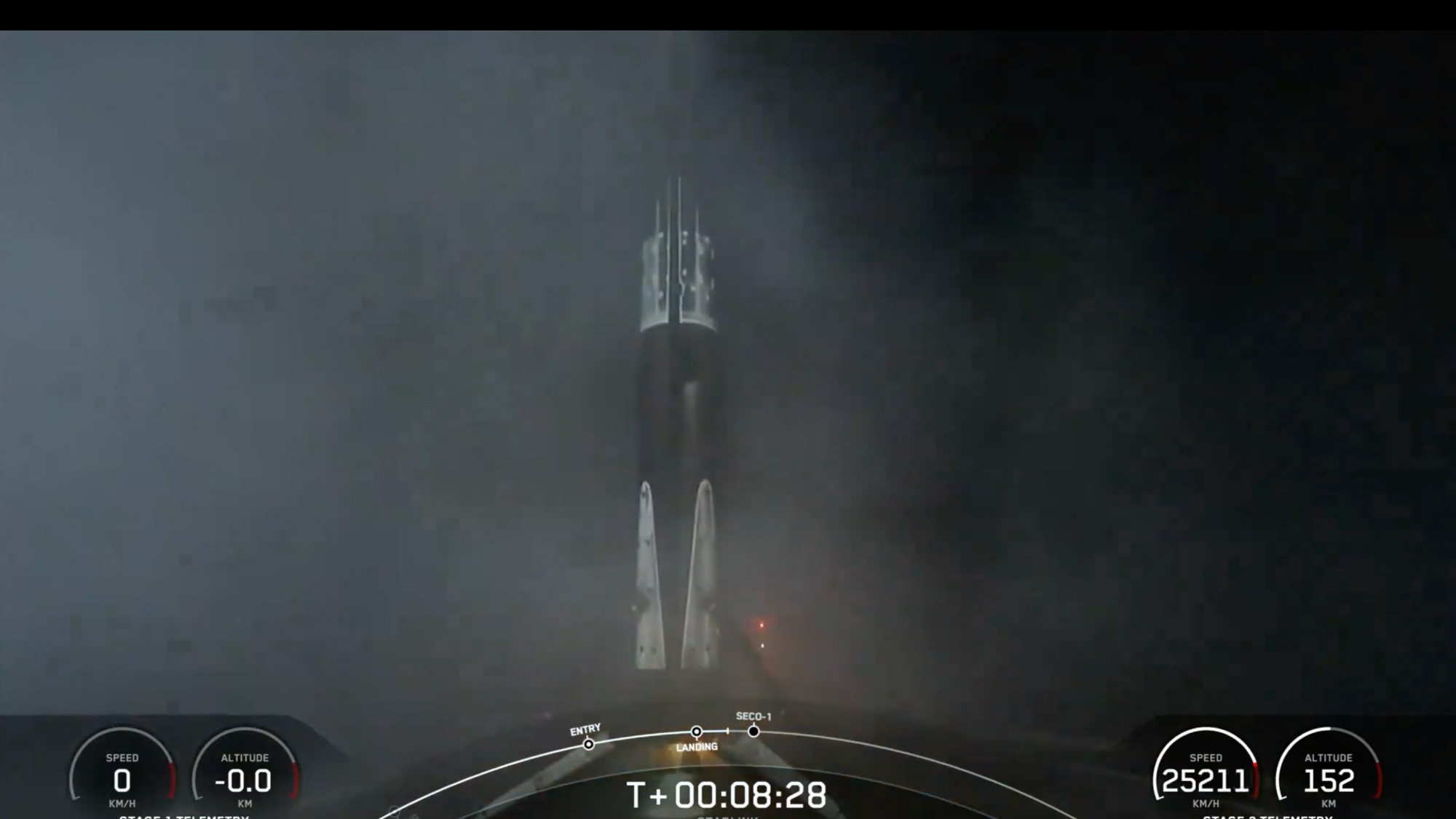SpaceX launches 23 satellites on 1st leg of Starlink doubleheader

SpaceX launched another batch of its Starlink broadband satellites this morning (April 5), on the first leg of a spaceflight doubleheader for the company.
A Falcon 9 rocket carrying 23 of SpaceX's Starlink spacecraft lifted off from Cape Canaveral Space Force Station in Florida today at 5:12 a.m. EDT (0912 GMT).
The Falcon 9's first stage then came back to Earth safely, making a vertical landing about 8.5 minutes after liftoff on the SpaceX droneship A Shortfall of Gravitas, which was stationed in the Atlantic Ocean.
Related: Starlink satellite train: How to see and track it in the night sky
It was the 14th launch and landing for this particular booster, according to a SpaceX mission description.
The Falcon 9's upper stage, meanwhile, hauled the 23 Starlink satellites to low Earth orbit, deploying them there about 65 minutes after liftoff as planned.
This morning's launch was the 33rd orbital mission of the year already for SpaceX, and the 22nd of 2024 devoted to building out the giant Starlink megaconstellation.
The liftoff was also the first leg of a planned Starlink doubleheader: SpaceX plans to launch 21 more of the internet satellites from Vandenberg Space Force Base in California tonight during a four-hour window that opens at 10:31 p.m. EDT (0231 GMT on April 6).
Breaking space news, the latest updates on rocket launches, skywatching events and more!

Michael Wall is a Senior Space Writer with Space.com and joined the team in 2010. He primarily covers exoplanets, spaceflight and military space, but has been known to dabble in the space art beat. His book about the search for alien life, "Out There," was published on Nov. 13, 2018. Before becoming a science writer, Michael worked as a herpetologist and wildlife biologist. He has a Ph.D. in evolutionary biology from the University of Sydney, Australia, a bachelor's degree from the University of Arizona, and a graduate certificate in science writing from the University of California, Santa Cruz. To find out what his latest project is, you can follow Michael on Twitter.

